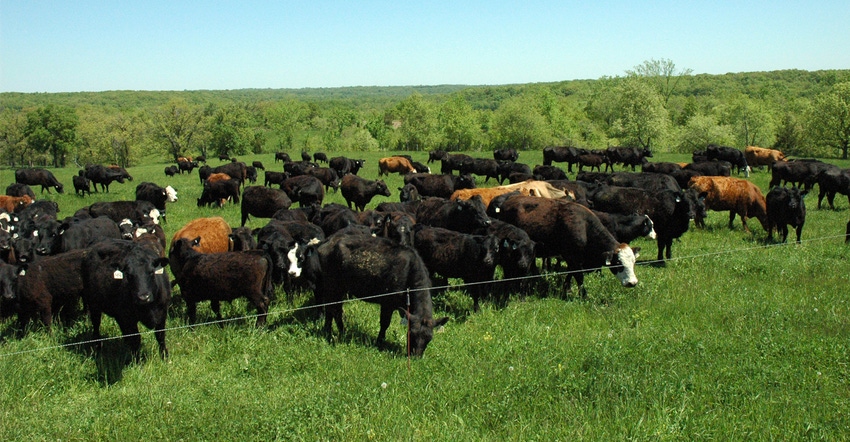June 4, 2018

After a cold winter that seemed to go on forever, spring 2018 lasted about two weeks and summer is now here.
The USDA National Oceanic and Atmospheric Administration’s heat stress forecast alerts livestock producers when heat stress conditions will be elevated for the coming week. Iowa was under a high heat warning on Memorial Day weekend. The hot temperatures early in the year before cattle had a chance to acclimate has caused some issues for producers.
For feedlot cattle, feed intake backed off as cattle adjusted to the hot weather. “This is a good time to make sure water flow for drinking is appropriate for increased summer intake by the cattle,” says Grant Dewell, Iowa State University Extension beef cattle veterinarian. “Also, make sure shades are in place and sprinklers are in working order.”
Beef cows especially vulnerable
The biggest concern during hot weather is the cow herd, he says. Many cows have not completely shed their winter coats and will not be able to regulate body temperatures well. Memorial Day weekend is also a common date for cow-calf producers to start artificially inseminating cows while some are turning bulls out. For those producers still not finished calving, the heat can be hard on newborn calves. Dehydration will occur rapidly for calves with mild scours or that are separated from their dam.
Temperatures above thermoneutral (above 75 to 80 degrees F) have been shown to decrease conception rates, Dewell says. Once temperatures increase in the morning, heat detection will be harder to see as visible signs of estrus will be depressed. If you are planning on a timed insemination protocol, set up your cows to breed first thing in the morning. Try to get cows bred as quickly as possible but do not bring too many at a time where they are standing in a holding pen getting hot without water. Avoid working cows in the heat of the day.
Special care for AI
Time removal of the CIDR insert to coincide with artificial insemination during the coolest time possible. A CIDR — controlled internal drug release — is an intravaginal progesterone insert used in the beef cattle, dairy cattle, goat and sheep industries. The progesterone is released at a controlled rate into the bloodstream after insertion. In all species, CIDRs are used for the synchronization of estrus.
“After insemination procedures are complete, keep the cows as cool as possible,” advises Dewell. “A pasture with shade trees, plenty of water and good airflow would be ideal. If the cows are to be held in a holding pen or drylot for a few days, make sure you provide plenty of water and shade if possible.”
For more information, see a list of heat-stress resources available from the Iowa Beef Center.
Source: Iowa State University
You May Also Like




